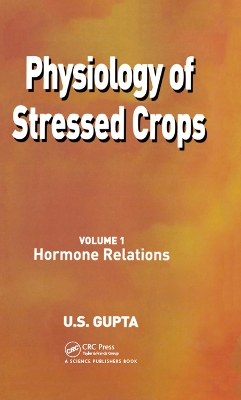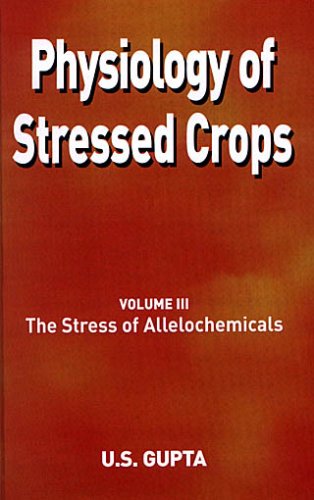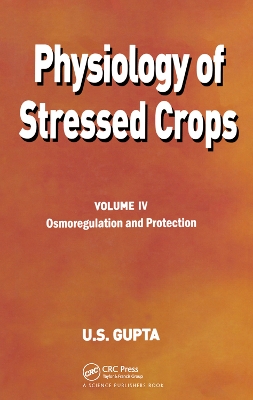Physiology of Stressed Crops
5 total works
The present multi-volume treatise has been planned to discuss important aspects of the crop-plant physiological aspects, viz., hormones, nutrients, cell membranes, and induced proteins, as related to different types of stresses each in separate volumes. Another type of stress which can be classed under biotic, environmental (sil) or chemical, viz., the stress of allelochemicals which has not been discussed before as a stress factor, will be discussed in a separate volume emphasizing its practical/ ap-plied aspects, rather than mentioning only the allelopathic effects. In this volume on Hormone Relations, different stresses have been arranged in order of their importance and work done.
Research on the physiology of crops under stress is of relatively recent origin and still in the stage of information building; practical use of the information gathered is yet to be made. Research on allelopathy and use of allelochemicals is one such example. The majority of work done focuses on the detrimental effects of living plants and their residues on crop growth, yield and quality, and little attention has been paid, that too only in the last 15-20 years, on making gainful use of this nature?s self defence mechanism, both by crops for weeds and weeds for crops, and so on. In this volume, unlike other books and symposium-volumes, efforts have been made to understand the problem and concentrate on aspects such as autotoxicity, crop-crop interference, crop-weed interference, weed-crop interference etc. for better understanding of the problems of monoculture, ratooning, crop rotation, mixed or strip cropping, mulching and weed smothering, etc. Further, the possibility of developing environment-friendly bi
This volume covers various aspects of nutrient (deficiency or toxicity) stress in general, and the effects of stress factors like soil acidity, soil salinity, allelochemicals, soil compaction, drought, water logging, atmospheric humidity, low temperature and freezing, high temperature (heat), solar radiation (low or high intensity and UV light) and air pollution have been discussed. The nutrient stress caused by parasitic weeds has also been discussed separately. Such a study will greatly help in avoiding the stress-induced problems of nutrient unavailability, fixation, excessive availability, uptake, transport, mineralization symbiotic fixation, and removal etc. and help in growing better crops in problem soils and/or problematic environments.
To cope with the abiotic stress-induced osmotic problems, plants adapt by either increasing uptake of inorganic ions from the external solution, or by de novo synthesis of organic compatible solutes acting as osmolytes. Of the osmoregulants and protectants discussed in this volume, trehalose, fructans, ectoine and citrulline, which are generated in different species, in osmotically ineffective amounts, mitigate the stress effects on cells/plants and improve productivity. There are several pieces of encouraging research discussed in this volume showing significant improvement in stress tolerance and in turn productivity by involving genetic engineering techniques.
Though plant cells are separated by cell walls, cells maintain their identity as they are delimited by semi-permeable membranes that permit them to function as autonomous units. The flow of materials in and out of the cell is regulated by channels, transporters, pumps, and acquaporins in these membranes. The cytoplasm is sandwiched between two membranes: the plasma membrane, which forms the outer boundary of the cytoplasm, and the tonoplast or the vacuolar membrane which forms the inner boundary. Cell membranes serve several different functions: form boundaries and provide compartmentalization, site of chemical reactions catalyzed by membrane proteins, regulate the exchange of ions/compounds across the barrier, site of perception/transmission of signals (hormones), and act in cell-to-cell communication.
The membrane functions are affected by different abiotic (biotic stress not discussed), nutritional, edaphic and mechanical stresses, which have been discussed in this volume in light of the recent literature
The membrane functions are affected by different abiotic (biotic stress not discussed), nutritional, edaphic and mechanical stresses, which have been discussed in this volume in light of the recent literature




